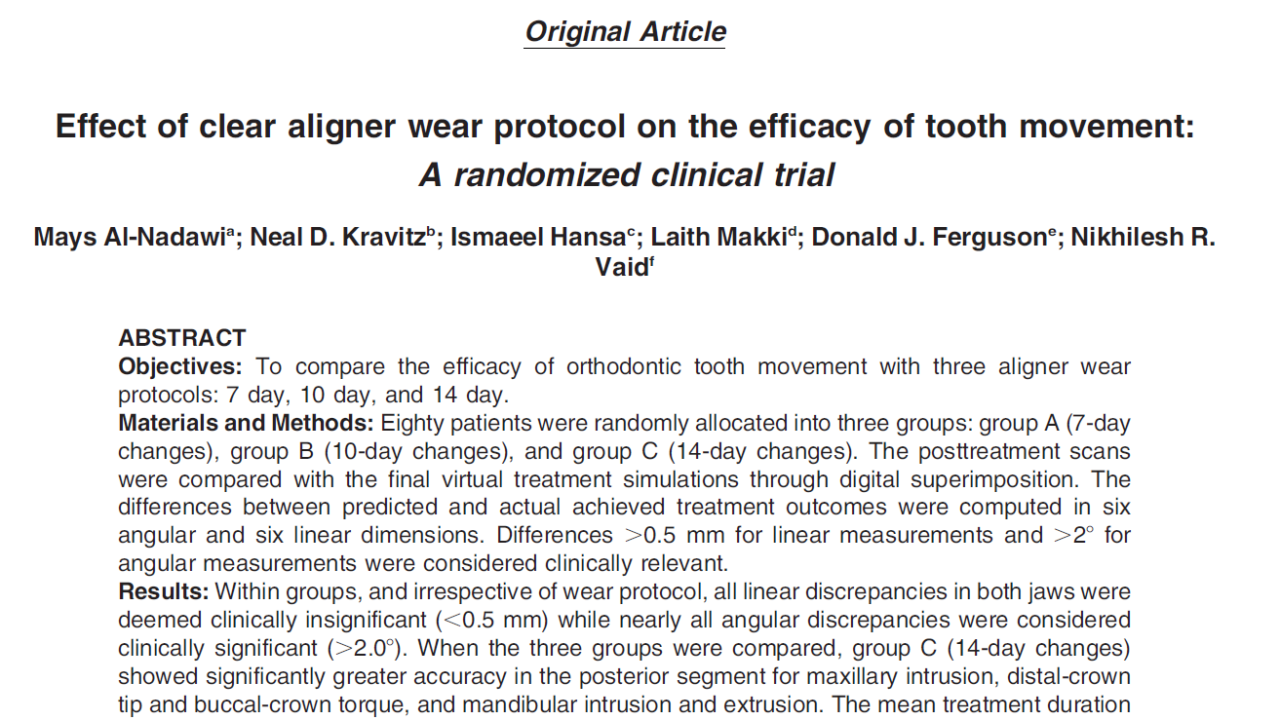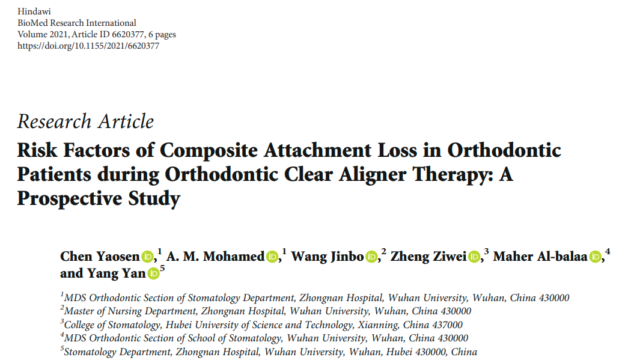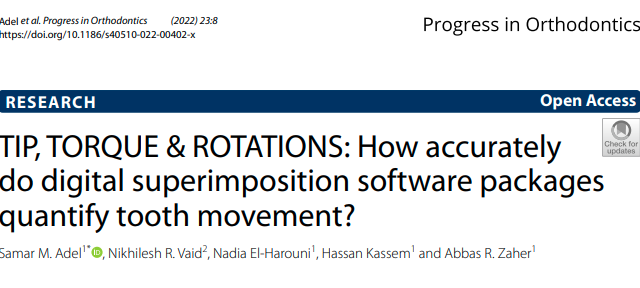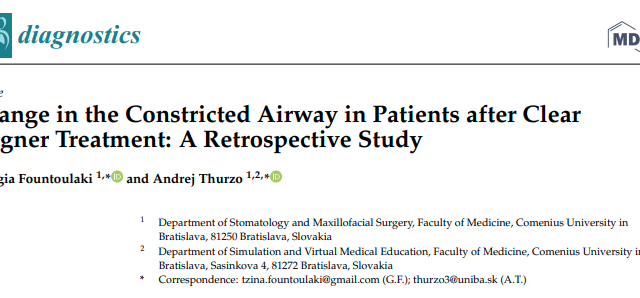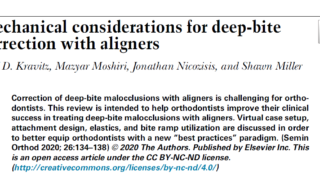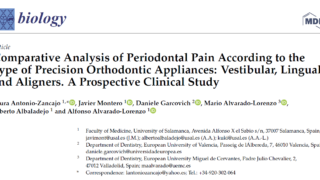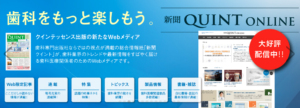歯科医師、特に矯正医向けの最新矯正論文情報サイト
日常診療で多忙な歯列矯正医のためのドクター専用サイトです。
日々の診療や臨床、医学研究に役立つ最新海外論文をPubMedから情報を提供します。
アブストラクトだけでなく、結果の表やグラフ、診療前後の詳しい情報を日本語に訳して提供しています。
今回、ご紹介するのはAngle Orthodontistに2021年に投稿された論文です。
マウスピース型矯正(インビザライン)のアライナー交換の最適なプロトコルについて検証した研究です。お忙しい先生方の情報提供にお役立てください。
アライナー交換タイミング論文タイトル
タイトル:Effect of clear aligner wear protocol on the efficacy of tooth movement:A randomized clinical trial
PMID:33296455 https://pubmed.ncbi.nlm.nih.gov/33296455/
著者:Mays Al-Nadawi; Neal D. Kravitz; IsmaeelHansa; LaithMakki; Donald J. Ferguson; NikhileshR. Vaid
雑誌名:Angle Orthodontist, Vol 91, No 2, 2021, 157-163.
DOI: 10.2319/071520-630.1
アライナー交換タイミング論文の要約
目的
7日間、10日間、14日間の3つのアライナー装着プロトコルを比較すること。
方法
80名の患者をA群(7日間)、B群(10日間)、C群(14日間)の3群に無作為に割り付けた。治療の予測モデルと最終的に達成されたモデルの差を6方向計算した。臨床的に重要な不一致は、垂直/水平的なズレは0.5mm、角度は2°に設定した。
結果
3つの装着プロトコルに関係なく、両顎すべての垂直/水平的なズレは臨床的に重要でないことが示唆された(<0.5mm)。一方、ほぼすべての角度は臨床的に重要な不一致であると示された(<2°)。C群(14日間)は他の群と比較して上顎の圧下、遠心傾斜、頬側トルクと有意に高い精度であった。また、下顎の圧下と挺出も有意に高い精度であった。平均治療期間は、A群(7日間)はC群(14日間)のほぼ半分であった(5カ月 vs 9ヵ月)。
結論
C群(14日間)は、いくつかの動きにおいて統計的に有意な差を示したが、臨床的には有意差の閾値を超えなかった。A群(7日間)の平均治療期間がとC群(14日間)の治療平均期間の半分であり、臨床的には同程度の治療精度であることから7日間のプロトコルは許容できることが示された。ただ、臼歯部の複雑な動きに関しては14日間のプロトコルを考慮しても良い。
アライナー交換タイミングの論文を詳しく読む
アライナー交換タイミングの論文の引用文献
- Vaid NR. Lets talk ALIGNers! APOS Trends Orthod. 2016;6:
177–178. doi:10.4103/2321-1407.186428 - Gu J, Tang JS, Skulski B, et al. Evaluation of Invisalign
treatment effectiveness and efficiency compared with
conventional fixed appliances using the Peer Assessment
Rating index. Am J Orthod Dentofac Orthop. 2017;151:259–doi:10.1016/j.ajodo.2016.06.041 - Gr¨unheid T, Loh C, Larson BE. How accurate is Invisalign in
nonextraction cases? Are predicted tooth positions
achieved? Angle Orthod. 2017;87:809–815. doi:10.2319/
022717-147.1 - Charalampakis O, Iliadi A, Ueno H, Oliver DR, Kim KB.
Accuracy of clear aligners: a retrospective study of patients
who needed refinement. Am J Orthod Dentofac Orthop.
2018;154:47–54. doi:10.1016/j.ajodo.2017.11.028 - Tindera M. Bracing for competition? Cheaper challengers
enter Invisalign’s $1.5 billion market. Forbes. Publishedhttps://www.forbes.com/sites/michelatindera/2018/05/
02/bracing-for-competition-cheaper-challengers-enterinvisaligns-
1-5-billion-market/#1fb9cbf92392. Accessed January
15, 2020. - Melkos AB. Advances in digital technology and orthodontics:
a reference to the Invisalignt method. Med Sci Monit. 2005;
11:39–42. - Morton J, Derakhshan M, Kaza S, Li C. Design of the
Invisalign system performance. Semin Orthod. 2017;23:3–doi:10.1053/j.sodo.2016.10.001 - Papadimitriou A, Mousoulea S, Gkantidis N, Kloukos D.
Clinical effectiveness of Invisalignt orthodontic treatment: a
systematic review. Prog Orthod. 2018;19:37. doi:10.1186/
s40510-018-0235-z - Robertson L, Kaur H, Fagundes NCF, Romanyk D, Major P,
Flores Mir C. Effectiveness of clear aligner therapy for
orthodontic treatment: a systematic review. Orthod Craniofacial
Res. 2020;23:133–142. doi:10.1111/ocr.12353 - Papageorgiou SN, Koletsi D, Iliadi A, Peltomaki T, Eliades T.
Treatment outcome with orthodontic aligners and fixed
appliances: a systematic review with meta-analyses. Eur J
Orthod. Published online 2019:1–13. doi:10.1093/ejo/cjz094 - Rossini G, Parrini S, Castroflorio T, Deregibus A, Debernardi
CL. Efficacy of clear aligners in controlling orthodontic tooth
movement: a systematic review. Angle Orthod. 2015;85:
881–889. doi:10.2319/061614-436.1 - Dasy H, Dasy A, Asatrian G, R´ozsa N, Lee HF, Kwak JH.
Effects of variable attachment shapes and aligner material
on aligner retention. Angle Orthod. 2015;85:934–940. doi:
10.2319/091014-637.1 - Kravitz ND, Kusnoto B, Agran B, Viana G. Influence ofattachments and interproximal reduction on the accuracy of canine rotation with invisalign. Angle Orthod. 2008;78:682–doi:10.2319/0003-219(2008)078[0682:IOAAIR]2.0.CO;2
- Simon M, Keilig L, Schwarze J, Jung BA, Bourauel C.Treatment outcome and efficacy of an aligner technique—regarding incisor torque, premolar derotation and molardistalization. BMC Oral Health. 2014;14:1–7. doi:10.1186/1472-6831-14-68
- Kravitz ND, Kusnoto B, BeGole E, Obrez A, Agran B. Howwell does Invisalign work? A prospective clinical studyevaluating the efficacy of tooth movement with Invisalign.Am J Orthod Dentofac Orthop. 2009;135:27–35. doi:10.1016/j.ajodo.2007.05.018
- Haouili N, Kravitz ND, Vaid NR, Ferguson DJ, Makki L. HasInvisalign improved? A prospective follow-up study on theefficacy of tooth movement with Invisalign. Am J OrthodDentofac Orthop. Published online 2020:1–6. doi:10.1016/j.ajodo.2019.12.015
- Drake CT, McGorray SP, Dolce C, Nair M, Wheeler TT.Orthodontic tooth movement with Clear Aligners. ISRN Dent.2012;2012:1–7. doi:10.5402/2012/657973
- Bollen AM, Huang G, King G, Hujoel P, Ma T. Activation timeand material stiffness of sequential removable orthodonticappliances. Part 1: ability to complete treatment. Am JOrthod Dentofac Orthop. 2003;124:496–501. doi:10.1067/S0889-5406(03)00576-6
- Clements KM, Bollen AM, Huang G, King G, Hujoel P, Ma T.Activation time and material stiffness of sequential removableorthodontic appliances. Part 2: dental improvements.Am J Orthod Dentofac Orthop. 2003;124:502–508. doi:10.1067/j.ajodo.2003.08.001
- Grauer D, Cevidanes LH, Tyndall D, Styner MA, Flood PM,Proffit WR. Registration of orthodontic digital models.Craniofacial Growth Ser. 2011;48:377–391. http://www.ncbi.nlm.nih.gov/pubmed/26549917%0Ahttp://www.pubmedcentral.nih.gov/articlerender.fcgi?artid=PMC/4636130
- Brown MW, Koroluk L, Ko CC, Zhang K, Chen M, Nguyen T.Effectiveness and efficiency of a CAD/CAM orthodonticbracket system. Am J Orthod Dentofac Orthop. 2015;148:1067–1074. doi:10.1016/j.ajodo.2015.07.029
- Grauer D, Proffit WR. Accuracy in tooth positioning with afully customized lingual orthodontic appliance. Am J OrthodDentofac Orthop. 2011;140:433–443. doi:10.1016/j.ajodo.2011.01.020
- Larson BE, Vaubel CJ, Gr ¨unheid T. Effectiveness ofcomputer-assisted orthodontic treatment technology toachieve predicted outcomes. Angle Orthod. 2013;83:557–doi:10.2319/080612-635.1
- Awad MG, Ellouze S, Ashley S, Vaid N, Makki L, FergusonDJ. Accuracy of digital predictions with CAD/CAM labial andlingual appliances: a retrospective cohort study. SeminOrthod. 2018;24:393–406. doi:10.1053/j.sodo.2018.10.004
- Djeu G, Shelton C, Maganzini A. Outcome assessment ofInvisalign and traditional orthodontic treatment comparedwith the American Board of Orthodontics objective gradingsystem. Am J Orthod Dentofac Orthop. 2005;128:292–298.doi:10.1016/j.ajodo.2005.06.002
- Hansa I, Semaan SJ, Vaid NR. Clinical outcomes andpatient perspectives of Dental Monitoringt GoLivet withInvisalignt—a retrospective cohort study. Prog Orthod.2020;21. doi:10.1186/s40510-020-00316-6
- Hansa I, Semaan SJ, Vaid NR, Ferguson DJ. Remotemonitoring and ‘‘tele-orthodontics’’: concept, scope andapplications. Semin Orthod. 2018;24:470–481. doi:10.1053/j.sodo.2018.10.011
記事監修

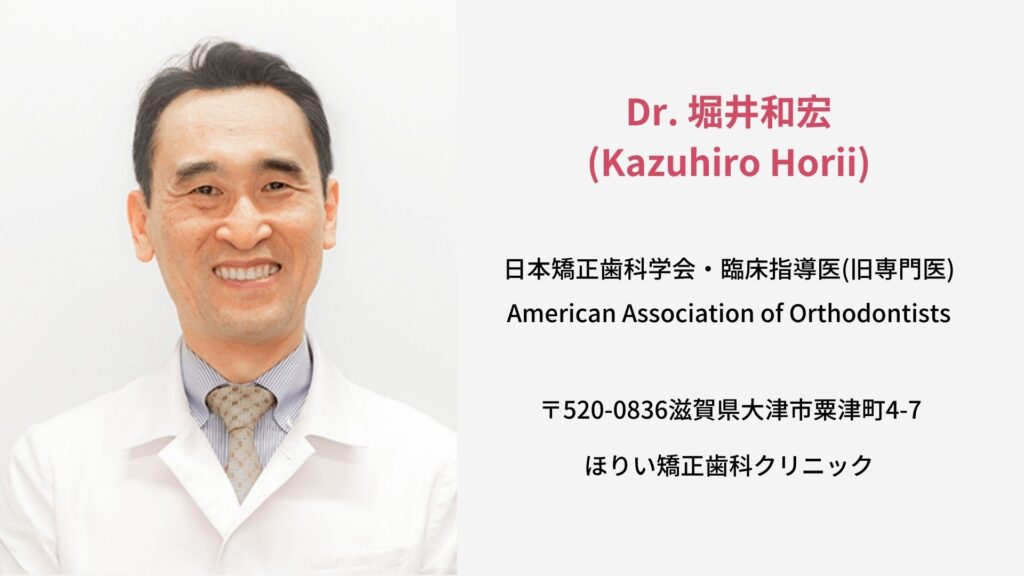
アライナー交換タイミングの論文の関連記事
マウスピース型矯正装置(インビザライン)のアライナー交換についての論文をご紹介しました。この研究によると、アライナーの交換のタイミングは患者の不正咬合の程度等を考慮する必要があるということでした。
歯ぎしりのある方は、アライナーの摩耗等の事情によりマウスピース型矯正装置による治療は難しいとされています。
しかし、患者の不正咬合、歯ぎしりの程度を考慮しながらアライナー交換をして治療を行ったケースもあります。
免責事項
本サイトは、PubMedに投稿されたオープンアクセスの査読論文をご紹介しております。
Discussionについては、すべての論文にagreeしているわけではありません。
しかし、「矯正海外論文サイト」は、最新矯正論文を提供するサイトとして矯正医の皆様がそれぞれ議論していただける一つのきっかけとなってくれたらと考えております。
また、内容についての疑問等は一切受け付けておりません。著者ご本人に記載の連絡先にお問い合わせをお願い致します。
さらに、学会発表や研修会においては本サイトの孫引きではなく必ず原著論文をご確認くださいますようお願い致します。
日本においてマウスピース型矯正はご存知の通り、完成薬機法対象外の矯正歯科装置であり、医薬品副作用被害救済措置制度の対象外となる場合がありますのでご注意ください。
矯正海外論文サイト公式インスタグラムのお知らせ
矯正海外論文サイトはInstagramを開設しております。
最新記事をお知らせする投稿がメインです。
最新論文のお知らせを受け取りたい方は
「矯正海外論文サイト」公式Instagramのフォローをぜひお願いします
なお、Instagramハイライトでは、
矯正治療の気になるKey Wordsを募集しております
矯正医の皆様のご回答をお待ちしております


